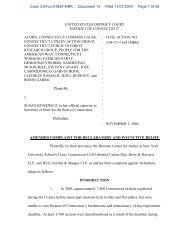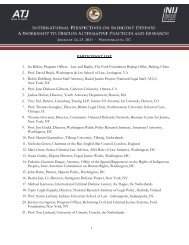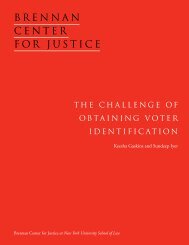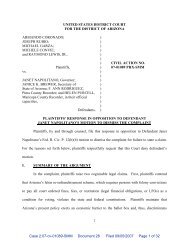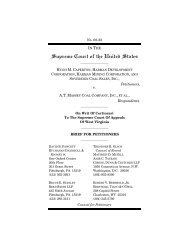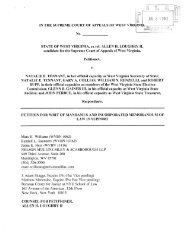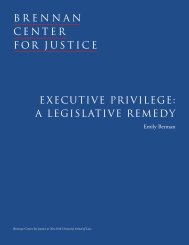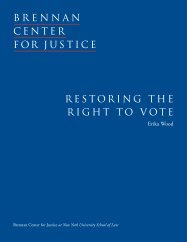THE NEW YORK STATE LEGISLATIVE PROCESS: AN ...
THE NEW YORK STATE LEGISLATIVE PROCESS: AN ...
THE NEW YORK STATE LEGISLATIVE PROCESS: AN ...
Create successful ePaper yourself
Turn your PDF publications into a flip-book with our unique Google optimized e-Paper software.
that the leaders exert over which bills reach the floor. 238 During these periods the<br />
Senate voted on 7,109 bills and the Assembly voted on 4,365 bills. Not a single<br />
bill that reached the floor for a vote was rejected in either chamber. In other<br />
words, the Speaker and the Majority Leader are able to prevent any bill from<br />
reaching the floors of their respective chambers without the certainty of passage<br />
and, presumably, without their support. See Fig. 17.<br />
When combined with the absence of floor amendments, these statistics show<br />
that, in all or nearly all cases, the full chambers do not act except to approve those<br />
bills already agreed upon by the Speaker or Majority Leader in their final form.<br />
■ RECONCILING BILLS PASSED BY EACH CHAMBER<br />
Conference committees are widely used in the U.S. Congress and in other state<br />
legislatures to reconcile differences between the bills passed by the two houses of a<br />
legislature to produce a single law that can be passed by both. 239 In a survey conducted<br />
by the National Conference of State Legislatures, only Nebraska (which, as<br />
a unicameral legislature, has no need for conference committees) and Delaware<br />
reported not having at least the procedural option of using conference committees.<br />
240 In July 1999, a request for information as to the actual usage of conference<br />
committees was posted to the electronic discussion group of the American Society<br />
of Legislative Clerks and Secretaries. 241 The 25 chambers that responded reported<br />
using an average of about 59 conference committees in that year alone. All 25<br />
chambers that responded had used at least one conference committee in 1999.<br />
The results from the professional legislatures that responded are shown in Figure<br />
18. 242 See Fig. 18.<br />
Although New York’s legislative rules include conference committees as a mechanism<br />
for resolving differences between versions of bills passed in the Senate and<br />
the Assembly, in practice this method has rarely been used since the first decades<br />
FIGURE 17<br />
<strong>NEW</strong> <strong>YORK</strong> <strong>STATE</strong>’S <strong>LEGISLATIVE</strong> <strong>PROCESS</strong> 35<br />
<strong>NEW</strong> <strong>YORK</strong> <strong>STATE</strong> LEGISLATURE ■ OUTCOMES OF FLOOR VOTES ON ALL LEGISLATION 1997-2001<br />
SENATE<br />
1997 1998 1999 2000 2001<br />
Bills Approved 1463 1465 1497 1481 1203<br />
Bills Defeated 0 0 0 0 0<br />
ASSEMBLY<br />
1997 1998 1999 2000 2001<br />
Bills Approved 1104 1640 1621 Not available Not available<br />
Bills Defeated 0 0 0 Not available Not available



